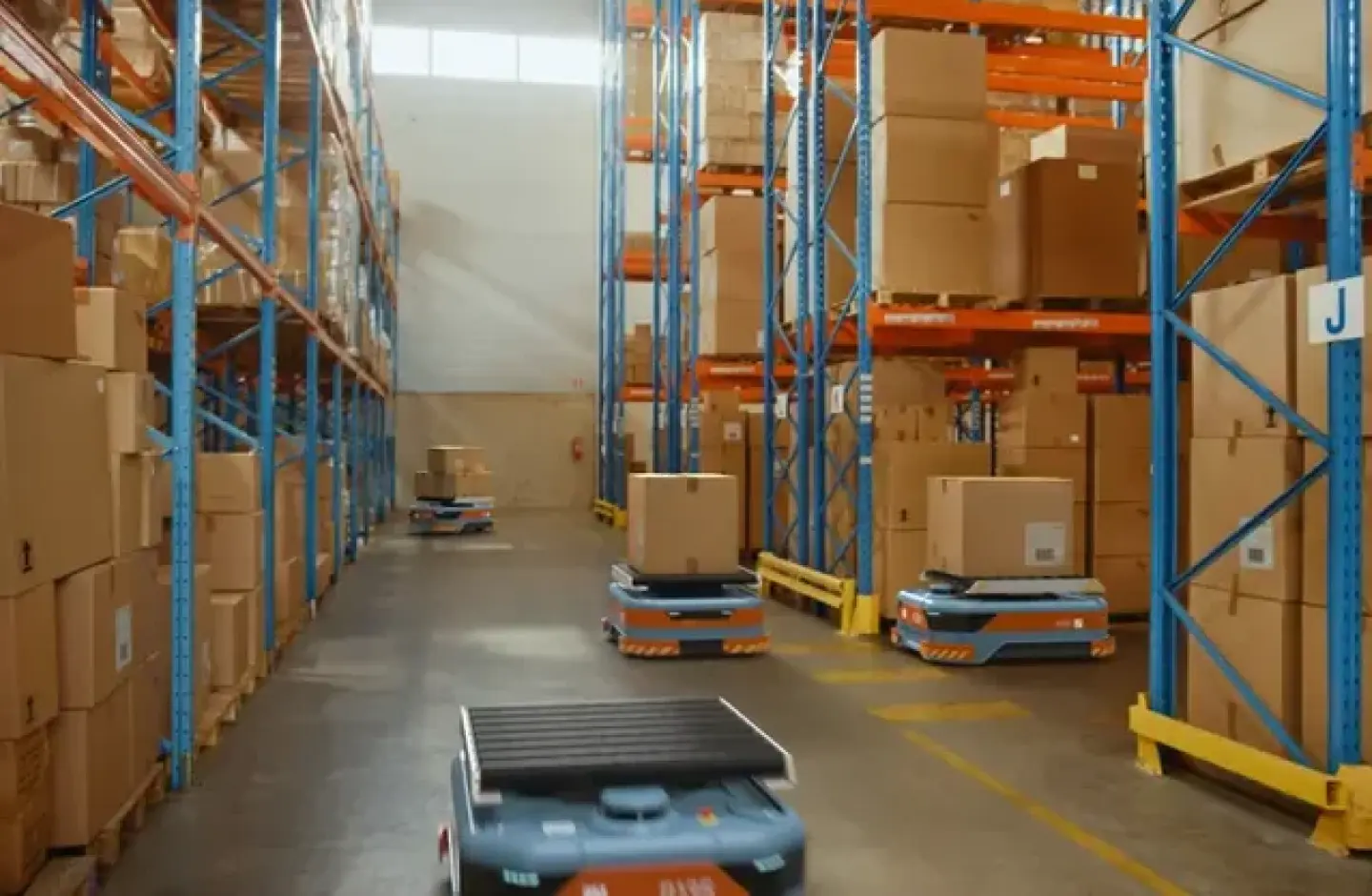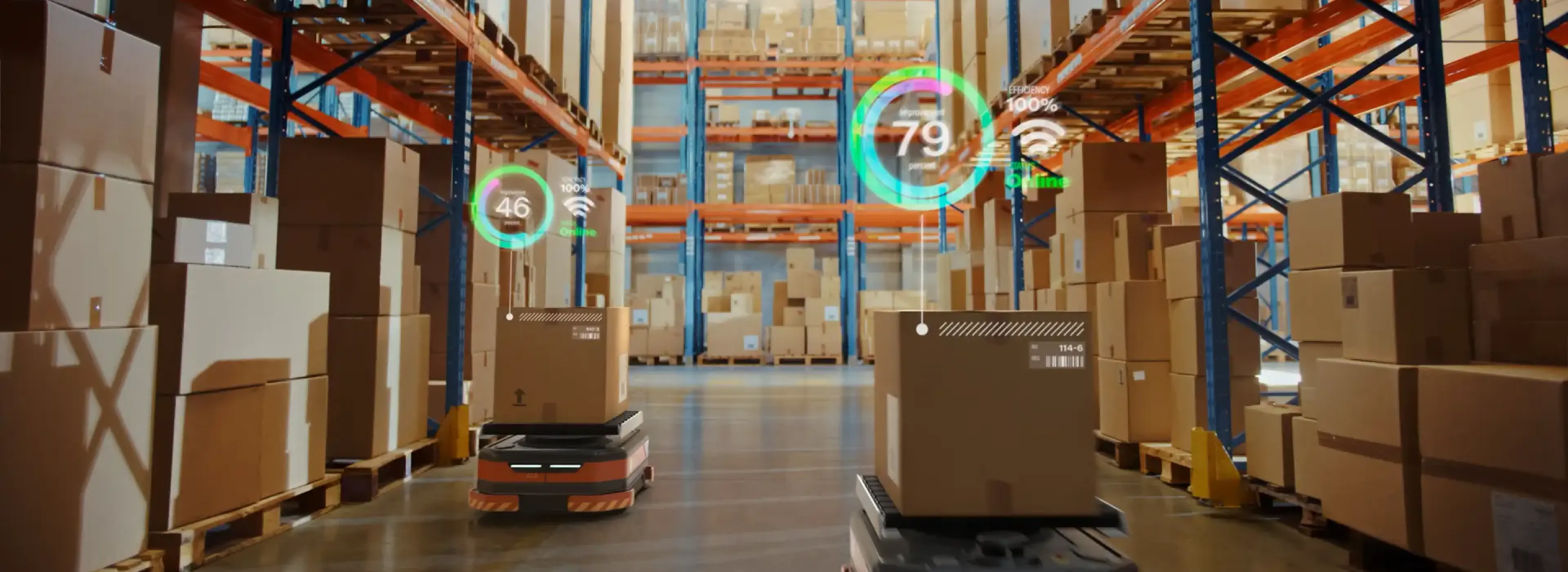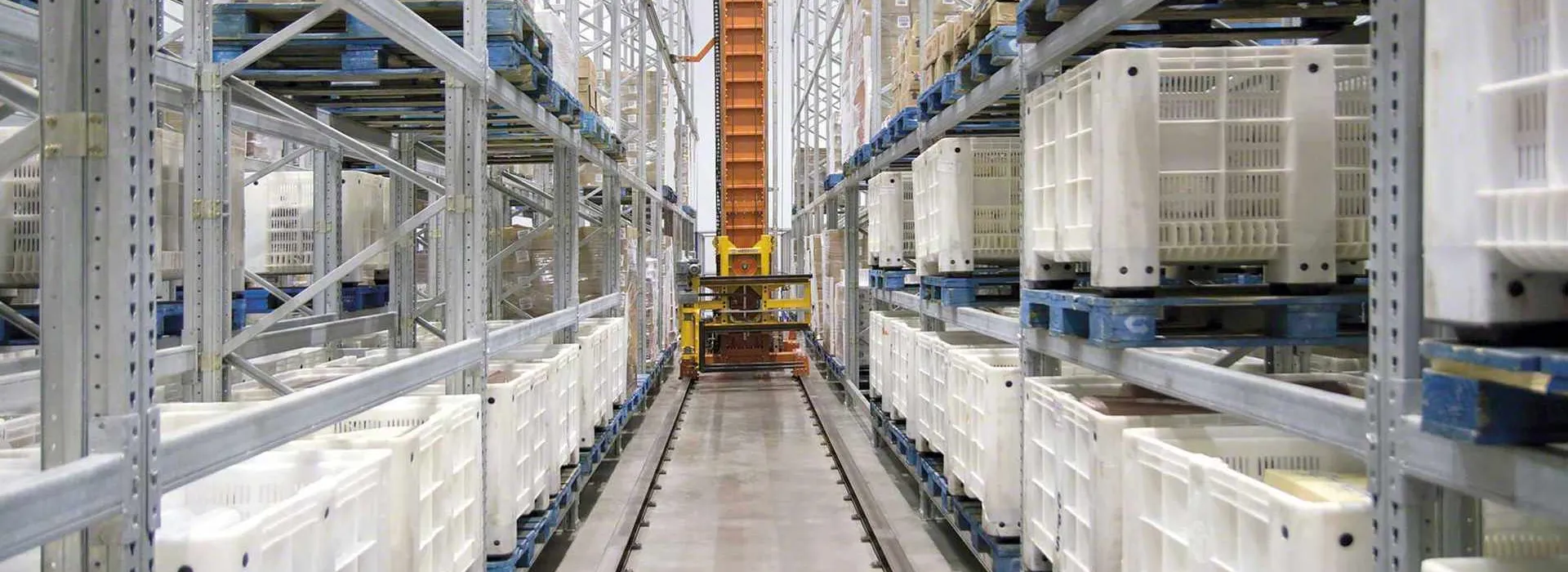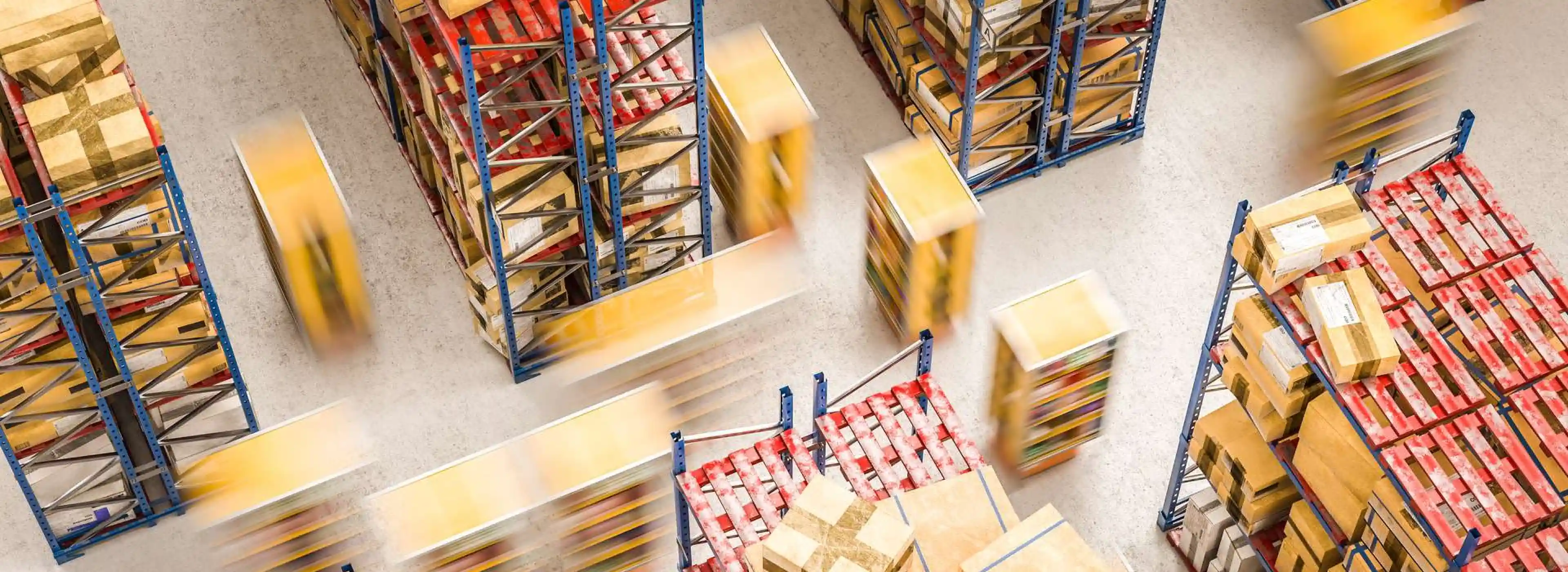The explosive growth of online shopping in recent years has put a lot of pressure on the warehousing industry to keep up with market demand. The need for faster and more accurate fulfillment led to an increased pace of innovation. Automation is one of the answers to this trend. A fully automated warehouse system uses software and hardware tools to streamline operations, from receiving inventory to shipping orders.
Click Here: Improve Warehouse Efficiency With This Advanced and Affordable WMS
This article will cover fully automated warehouse systems, including how they function, available types of automation, and the technologies behind them. We will also discuss when to implement them, how to overcome challenges, and how to conduct a cost analysis. Read on to see if automation is right for you.

Understanding Fully Automated Warehouse Systems
Fully automated warehouse systems use advanced technologies to streamline operations and eliminate manual tasks. By seamlessly integrating automation solutions into warehouse processes, these systems optimize tasks in three key areas of warehouse operations: material handling, inventory management, and putaway and order picking. Let’s explore each one.
Material Handling
Automation significantly transformed the material handling process, a crucial aspect of warehouse operations. Automated guided vehicles (AGVs), autonomous mobile robots, and stacker cranes are just a few examples of technologies that facilitate seamless material handling in automated warehouses.
Inventory Management
Inventory management is another area greatly impacted by automation. With fully automated warehouse systems tracking inventory levels, storing goods, and efficiently retrieving items, warehouse managers can achieve real-time inventory visibility and control. Automation technologies, such as dimensioning systems and workflow software, enable accurate space management and process enforcement, reducing inventory discrepancies and improving operations.
Putaway and Order Picking
The putaway and order-picking process can be optimized by using automated storage and retrieval systems (AS/RS) and robotics. These technologies work together to locate, retrieve, and transport items automatically, minimizing human intervention and maximizing order fulfillment speed and accuracy.
What are the Types of Warehouse Automation Systems?
Warehouse automation solutions encompass a diverse range of systems, solutions, and technologies. From digital automation solutions to physical automation technologies, warehouse operators can choose from a wide array of options to suit their specific needs.
Digital Automation
Digital automation technologies offer modern warehouse operators a new approach to streamlining operations, improving inventory control, and enhancing warehouse operations.
Some key technologies in digital automation include:
- Warehouse Management System (WMS): A WMS integrates various warehouse functions, facilitating efficient inventory management, stock levels, space management, order tracking, and more.
- Workflow Management Software: Workflow automation uses software to automate warehouse task management without human intervention. Warehouse workflows rely on rule-based logic to automate the creation and assignment of warehouse tasks. Plus, this system can notify stakeholders, update systems, and more.
- Predictive Analytics: With this powerful tool, warehouse managers can predict stock levels, forecast demand, detect inefficiencies, predict churn, and identify high-value customers.
- System Integrations: When internal systems are integrated with external systems, cargo movements are automatically monitored, tracked, and updated in real-time with all relevant information without human intervention.
Benefits of digital automation solutions in warehouse operations:
- Optimized inventory control and accuracy
- Accurate stock level and demand forecasts
- Enhanced order fulfillment speed and customer satisfaction
- Improved supply chain visibility and decision-making
- Greater scalability and adaptability to changing business needs

Physical Automation
These solutions focus on automating physical tasks, such as material handling and storage, to improve efficiency and reduce labor costs.
Key technologies in physical automation include:
- Automatic Guided Vehicles (AGVs): AGVs use sensors to follow a set path on a warehouse floor. They work well in large, simple warehouses with specific layouts but not in smaller, complex ones with high human traffic.
- Conveyor Systems: Conveyor belts and sortation systems automate the movement of goods within a warehouse, optimizing order fulfillment and reducing manual labor.
- Automated Storage and Retrieval Systems (AS/RS): These systems utilize stacker cranes, automated guided vehicles, or robotics to store and retrieve items from designated storage locations, minimizing human intervention and increasing storage capacity.
- Autonomous Mobile Robots (AMRs): AMRs are versatile robots that navigate warehouse environments and handle inventory retrieval, order picking, and material transportation tasks.
Benefits of digital automation solutions in warehouse operations:
- High speed in material handling and order fulfillment
- Reduction of manual labor costs
- Improved inventory storage capacity and warehouse space utilization
- Enhanced safety and reduced human error
- Increased operational flexibility and adaptability to changing demand
When is the Right Time to Automate a Warehouse?
Deciding when to implement a fully automated warehouse system is a crucial consideration for managers. While automation can bring significant benefits, understanding the right time and level of automation readiness is essential to maximize operational efficiency and ROI.
Assessing the Need for Automation in Warehousing
Assessing the need for automation in warehousing involves evaluating existing manual processes, labor costs, inventory management practices, and demand forecasts. This assessment enables warehouse operators to spot areas where automation can make the most impact and deliver substantial improvements in operational efficiency.
- Manual Processes: Identifying manual processes that can be automated helps reduce labor costs, minimize human error, and increase operational efficiency.
- Labor Costs: Analyzing labor costs and assessing the potential ROI of implementing automation technologies can highlight significant savings opportunities.
- Warehouse Management System: Evaluating the effectiveness of the current warehouse management system helps identify areas where automation can streamline processes, enhance inventory accuracy, and reduce storage costs.
- Demand Forecasts: Analyzing demand forecasts and trends can reveal areas where automation can help meet customer demands more efficiently, improve order fulfillment speed, and reduce stockouts.
Once a comprehensive assessment is complete, it’s time to look at the steps warehouse operators must take to implement a fully automated warehouse system.
Implementing an Automated Warehouse Model
Implementing a fully automated warehouse system requires careful planning and a strategic transition. This approach ensures a smooth and successful implementation of automation technologies, minimizing disruptions and maximizing operational efficiency.
Steps to Transitioning to an Automated Warehouse
Transitioning to a fully automated warehouse system involves several key steps, from careful planning and implementation to training and continuous improvement. By following best practices, warehouse operators can ensure a smooth transition to an automated model.
Key steps in transitioning to an automated warehouse:
- Automation Planning: Define automation goals, evaluate technologies and current processes, establish a budget, and create an implementation plan.
- Warehouse Management: Optimize layout, workflow, and inventory management processes to accommodate automation technologies.
- Process Automation: Automate manual tasks, such as order picking, inventory tracking, task management, and material handling, using appropriate automation solutions.
- Training and Integration: Train employees on new technologies, integrate automation systems and software with existing processes, and ensure seamless communication between systems and people.
- Continuous Improvement: Regularly monitor and evaluate automated processes, identify areas for improvement, and execute best practices to maximize efficiency.
Following these steps, warehouse operators can successfully transition to automated operations, harnessing the power of technologies to optimize warehouse operations.
Challenges and Solutions in a Fully Automated Warehouse System
While automation offers numerous benefits, there are also challenges that warehouse operators must overcome to successfully implement and manage automated systems. Overcoming these challenges is crucial for getting the most out of automation.
Workforce Displacement
One of the biggest challenges of automating warehouses is addressing the concerns related to the displacement of human workers. As automated systems take over routine and manual tasks, redefining the role of human workers within the warehouse is becoming increasingly important. Here are some solutions to this challenge:
- Train and upskill: Provide proper training for your employees on using and maintaining the new automated systems. This will reduce fear and resistance to change and ensure smooth adoption.
- Reskill and redeploy: Assess your workforce needs and identify opportunities to reskill existing employees for new roles within the automated warehouse or other areas of the business.
- Communicate effectively: Maintain open communication with your employees throughout the automation process. Address concerns, involve them in decision-making, and emphasize the benefits for them and the company.
High Upfront Costs
The implementation costs of warehouse automation can be high, but it’s a strategic investment with long-term benefits. Ways to overcome this are:
- Invest strategically: Start by analyzing your warehouse operations and identifying specific areas where automation can offer the most significant return on investment. Don’t automate everything at once; prioritize based on potential gains.
- Seek funding options: Explore financing options like leasing equipment or partnering with other companies to gain access to the necessary capital.
- Do phased implementation: Implement automation in phases, starting with smaller pilots and gradually scaling up as you demonstrate success and value.

Cybersecurity
With the interconnectivity of automation technologies, warehouses are vulnerable to cyber-attacks. Here are ways to address this threat:
- Be proactive: Patch systems regularly, secure the network, and implement redundancy/fail-over to reduce single points of failure.
- Train your people: Make employees your allies against cyber threats with awareness training and simulated attacks. Everyone plays a part.
- Always be learning: Check for vulnerabilities, adapt to new threats, and keep your defenses evolving.
Maintenance Costs
Automated systems require regular maintenance, software updates, and troubleshooting, which can incur additional costs. To mitigate this, you must:
- Use modular designs: Prioritize standardized and readily replaceable components in key systems. Use modular architecture for isolated repairs or upgrades to minimize downtime and maintenance costs.
- Leverage partnerships: Negotiate comprehensive service agreements with equipment and software suppliers to get expert support and save costs. Outsource non-critical maintenance tasks to specialized service providers to benefit from their experience and expertise, yielding significant cost savings.
By adopting these strategies, warehouse operators can successfully overcome automation challenges, optimize operations, and unlock the full potential of a fully automated warehouse system.
Cost Analysis of Implementing Automation
Performing a proper cost analysis for a fully automated warehouse system is crucial for making informed decisions and ensuring a return on investment (ROI). Here’s how you can approach it:
1. Identify & Categorize Costs
Capital Expenditure (CapEx)
- Hardware: Robots, conveyors, AS/RS, software licenses, installation costs.
- Infrastructure upgrades: Potential modifications to the warehouse layout systems and networks, power upgrades.
Operational Expenditure (OpEx)
- Maintenance and repairs: Planned maintenance, service contracts, unexpected repairs.
- Energy consumption: Increased power usage for automated equipment.
- Labor costs and training: Potential reduction in staff, retraining existing employees.
- Software subscriptions: Ongoing software licensing and maintenance fees.
2. Quantify Costs
- Research and collect cost data: Obtain pricing quotes from multiple specialized vendors, estimate infrastructure adjustments, and factor in labor costs.
- Consider lifecycle costs: Don’t just focus on upfront costs but also on the total cost of ownership—for example, maintenance, repairs, and potential upgrades of the system over its lifespan.
- Sensitivity analysis: Factor in potential variances in costs and benefits to gauge the robustness of your analysis.
3. Analyze Benefits & ROI
- Quantify operational efficiency gains: Estimate improvements in order fulfillment speed, accuracy, inventory management, and more.
- Project operational cost savings: Calculate reductions in labor costs, reduced errors, and increased operational efficiency.
- Analyze ROI: Compare the total lifetime cost of the project versus the cost savings to evaluate the potential financial return.
4. Consider Intangible Benefits
- Improved customer satisfaction: Faster delivery times and fewer errors can enhance customer experience and increase retention.
- Increased competitiveness: Automation can provide an edge in a competitive market.
- Enhanced workplace safety: Reduced manual labor can minimize employee injuries.
5. Analyze Benefits & ROI
Consult with automation specialists, logistics consultants, technology experts, and financial analysts to refine your cost analysis and feasibility.
By conducting a thorough cost analysis, warehouse operators can make informed decisions, optimize automation investments, and reap the long-term benefits of automated systems.
Conclusion
Fully automated warehouse systems are revolutionizing the industry, offering increased efficiency, accuracy, and productivity. These systems use advanced technologies like robotics, artificial intelligence, warehouse workflows, and automation to streamline operations and minimize human error. With the evolution of warehouse automation, businesses can now optimize their warehousing operations and meet the growing demands of customers.
Implementing an automated model may seem daunting, but by assessing the need for automation, analyzing data, and strategically transitioning, businesses can successfully embrace this new era. Although challenges may arise, such as common obstacles and costs, the benefits of automation far outweigh the drawbacks.
As we look to the future, it becomes evident that fully automated warehouse systems are the way forward. They offer unmatched capabilities and efficiencies, ensuring businesses stay competitive in a rapidly changing market.
If you’re interested in exploring the possibilities of automated warehousing, get in touch with our experts today.
For more information about automating warehouse operations or the latest warehouse technologies trends, you can follow us on LinkedIn, YouTube, Twitter, or Facebook.












